16
Jul
Take Action: USDA Must Offer Basic Protection from Genetically Engineered Organisms
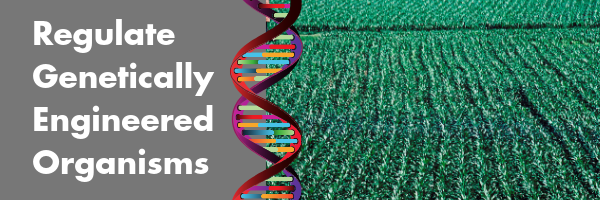 (Beyond Pesticides, July 16, 2019) USDA’s proposed new rules on genetically engineered (GE) crops exempt almost all GE crops from regulation and allow the company that makes them to decide whether they are safe. The rules proposed by USDA’s Animal and Plant Health Inspection Service (APHIS) benefit companies like Monsanto/Bayer and Dow, but fail to protect farmers, consumers, and the environment. Please tell APHIS to abandon its proposal and support a regulatory system that is consistent with modern science.
(Beyond Pesticides, July 16, 2019) USDA’s proposed new rules on genetically engineered (GE) crops exempt almost all GE crops from regulation and allow the company that makes them to decide whether they are safe. The rules proposed by USDA’s Animal and Plant Health Inspection Service (APHIS) benefit companies like Monsanto/Bayer and Dow, but fail to protect farmers, consumers, and the environment. Please tell APHIS to abandon its proposal and support a regulatory system that is consistent with modern science.
Tell USDA not to allow companies to approve their own GE crops.
The rules would govern USDA’s role in the outdated and fatally flawed âCoordinated Framework for the Regulation of Biotechnology.â The Framework fails to account for the unique risks of genetic engineering, using existing laws like the Plant Protection Act to address issues for which they were not designed. This proposal weakens the APHIS regulations even more.
All genetically engineered (GE) organismsâplants, animals, or microorganismsâshould be subjected to systematic assessments of human and environmental effects and indirect economic effects (such as contamination of organic or non-GE crops leading to rejection in foreign markets, spread of resistant pests, etc.) before being allowed on the market. These assessments must be made available to the public for comment. All products from GE organisms in the marketplace should be labeled as such to allow consumer choice and to permit tracking of unintended health effects. Companies that develop GE organisms should be required to disclose any GE trait, marker genes, or other genetic constructs that might be present in a commercial GE seed product, including traits and genes for obsolete, no longer marketed traits. In addition, the definition of genetic engineering should be broad enough to include all the newer genetic engineering techniques, such as RNAi or the new gene-editing technologies (such as CRISPR-cas9, TALEN, ZNF, and meganucleases).
In particular, APHIS regulations should:
- Base the regulation of GE organisms on the unique hazards they present;
- Include âsynthetic biologyâ in the definition of regulated genetic engineering;
- Prohibit developers from exempting themselves from regulation;
- Regulate PMPIsâplant-made pharmaceutical and industrial chemicals;
- Ensure that PIPsâplant incorporated protectantsâare regulated at all scales;
- Address hazards other than âplant pestâ risks, including: The unwelcome presence of GE genes in neighboring fields of organic or identity-preserved crops, the creation of new compounds in a plant, formed in the plant’s detoxification of herbicides, the movement of genes for manufacture of industrial or pharmaceutical chemicals into crop plants, the creation of âsuperweedsâ (plant pests) through selection for resistance to herbicides continually used on GE crops, the overuse of herbicides in cropping systems dependent on the use of herbicides sprayed over herbicide-tolerant crops, destruction of habitat adjacent to farm fields by overuse of nonselective herbicides sprayed over herbicide-tolerant crops, selection for resistance in insects targeted by PIPs, reduction in populations of insects due to effects of PIPs and destruction of habitat adjacent to fields sprayed by nonselective herbicides over herbicide-tolerant crops, and health effects suffered by those exposed to excessive use of herbicides.
Sign your name to our petition (link below), which we will send to APHIS. To be even more effective, submit your own comments through the Regulations.gov website. Feel free to copy from the language in the petition and/or that in the Beyond Pesticides comments.
Tell USDA not to allow companies to approve their own GE crops.
Petition: USDA Must Offer Basic Protection from Genetically Engineered Organisms
USDA Docket APHIS-2018-0034-0037Â
The âCoordinated Framework for the Regulation of Biotechnologyâ fails to account for the unique risks of genetic engineering, using existing laws like the Plant Protection Act to address issues for which they were not designed. This proposal weakens the APHIS regulations even more.
All genetically engineered (GE) organismsâplants, animals, or microorganismsâshould be subjected to systematic assessments of human and environmental effects and indirect economic effects (such as contamination of organic or non-GE crops leading to rejection in foreign markets, spread of resistant pests, etc.) before being allowed on the market. These assessments must be made available to the public for comment. All products from GE organisms in the marketplace must be labeled as such to allow consumer choice and to permit tracking of unintended health effects. Companies that develop GE organisms should be required to disclose any GE trait, marker genes, or other genetic constructs that might be present in a commercial GE seed product, including traits and genes for obsolete, no longer marketed traits. In addition, the definition of genetic engineering should be broad enough to include all the newer genetic engineering techniques such as RNAi or the new gene-editing technologies (such as CRISPR-cas9, TALEN, ZNF, and meganucleases).
In particular, APHIS regulations should:
- Base the regulation of GE organisms on the unique hazards they present;
- Include âsynthetic biologyâ in the definition of regulated genetic engineering;
- Prohibit developers from exempting themselves from regulation;
- Regulate PMPIsâplant-made pharmaceutical and industrial chemicals;
- Ensure that PIPs âplant incorporated protectantsâare regulated at all scales;
- Address hazards other than âplant pestâ risks, including: The unwelcome presence of GE genes in neighboring fields of organic or identity-preserved crops, the creation of new compounds in a plant, formed in the plant’s detoxification of herbicides, the movement of genes for manufacture of industrial or pharmaceutical chemicals into crop plants, the creation of âsuperweedsâ (plant pests) through selection for resistance to herbicides continually used on GE crops, the overuse of herbicides in cropping systems dependent on the use of herbicides sprayed over herbicide-tolerant crops, destruction of habitat adjacent to farm fields by overuse of nonselective herbicides sprayed over herbicide-tolerant crops, selection for resistance in insects targeted by PIPs, reduction in populations of insects due to effects of PIPs and destruction of habitat adjacent to fields sprayed by nonselective herbicides over herbicide-tolerant crops, and health effects suffered by those exposed to excessive use of herbicides.









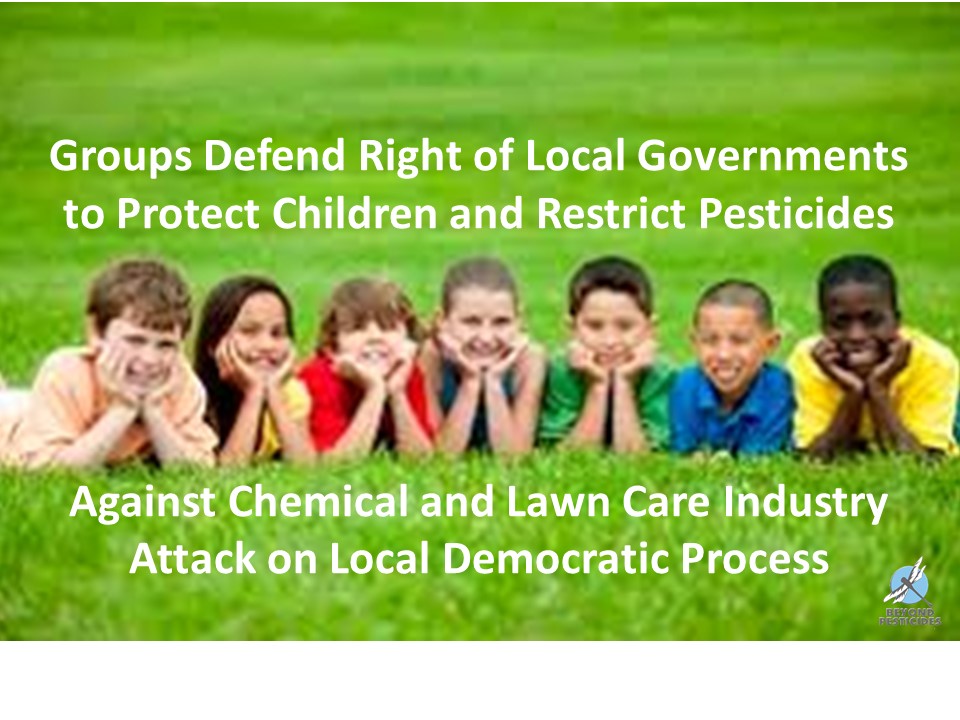 (Beyond Pesticides, July 15, 2019)Â On Friday, Marylandâs highest court upheld the right of local governments to restrict the use of toxic lawn care pesticides more stringently than the state. By denying an appeal from the pesticide industryâs challenge to a lower court ruling, the Maryland Court of Appeals has made official
(Beyond Pesticides, July 15, 2019)Â On Friday, Marylandâs highest court upheld the right of local governments to restrict the use of toxic lawn care pesticides more stringently than the state. By denying an appeal from the pesticide industryâs challenge to a lower court ruling, the Maryland Court of Appeals has made official  (Beyond Pesticides, July 12, 2019)Â The U.S. Department of Agriculture (USDA) announced, on Saturday, July 6 that it would
(Beyond Pesticides, July 12, 2019)Â The U.S. Department of Agriculture (USDA) announced, on Saturday, July 6 that it would  (Beyond Pesticides, July 11, 2019) Pregnant mothers with higher concentrations of pesticide metabolites (breakdown products) in their urine are more likely to have children who develop symptoms of Attention Deficit/Hyperactivity Disorder (ADHD), according to research conducted by the University of Southern Denmark and Odense University Hospital. The results of this study are consistent with past findings from
(Beyond Pesticides, July 11, 2019) Pregnant mothers with higher concentrations of pesticide metabolites (breakdown products) in their urine are more likely to have children who develop symptoms of Attention Deficit/Hyperactivity Disorder (ADHD), according to research conducted by the University of Southern Denmark and Odense University Hospital. The results of this study are consistent with past findings from  (Beyond Pesticides, July 10, 2019) The California Coastal Commission will host a public hearing today on a U.S. Fish and Wildlife Service (USFWS) proposal to drop 1.5 tons of the rodenticide brodifacoum, an extremely potent anticoagulant, on the Farallon Islands National Wildlife Refuge.
(Beyond Pesticides, July 10, 2019) The California Coastal Commission will host a public hearing today on a U.S. Fish and Wildlife Service (USFWS) proposal to drop 1.5 tons of the rodenticide brodifacoum, an extremely potent anticoagulant, on the Farallon Islands National Wildlife Refuge. 
 (Beyond Pesticides, June 8, 2019)Â Scientists studying the precipitous decline in populations of monarch butterflies are searching for causes, and
(Beyond Pesticides, June 8, 2019) Scientists studying the precipitous decline in populations of monarch butterflies are searching for causes, and  (Beyond Pesticides, July 5, 2019) This is a story about a chemical pesticide, a fungicide, in wide use for which the mode of action, i.e., the ability to cause harm, has not been fully understood. It is not a story unique to this pesticide. Rather, it is an important story to consider when deciding to use a pesticide or allowing a pesticide to be used. The question is whether the chemical could be broadly problematic beyond the target organisms, in this case fungi? In its coverage of a study published in March, the
(Beyond Pesticides, July 5, 2019) This is a story about a chemical pesticide, a fungicide, in wide use for which the mode of action, i.e., the ability to cause harm, has not been fully understood. It is not a story unique to this pesticide. Rather, it is an important story to consider when deciding to use a pesticide or allowing a pesticide to be used. The question is whether the chemical could be broadly problematic beyond the target organisms, in this case fungi? In its coverage of a study published in March, the  (Beyond Pesticides, July 3, 2019) A disturbing association between urinary triclosan concentrations and osteoporosis has been identified in an epidemiological study. Drawing from the National Health and Nutrition Examination Survey (NHANES) results for 1,848 U.S. adult women, the authors conclude that higher concentrations of urinary triclosan are associated with lower bone mass density and higher prevalence of osteoporosis among U.S. adult women.
(Beyond Pesticides, July 3, 2019) A disturbing association between urinary triclosan concentrations and osteoporosis has been identified in an epidemiological study. Drawing from the National Health and Nutrition Examination Survey (NHANES) results for 1,848 U.S. adult women, the authors conclude that higher concentrations of urinary triclosan are associated with lower bone mass density and higher prevalence of osteoporosis among U.S. adult women. (Beyond Pesticides, July 2, 2019) German cockroaches, the bane of many apartment-dwellers throughout the U.S., can rapidly develop cross-resistance to insecticides they have never been exposed to, according to researchers from Purdue University. âThis is a previously unrealized challenge in cockroaches,â said Michael Scharf, PhD, whose findings were published in the journal
(Beyond Pesticides, July 2, 2019) German cockroaches, the bane of many apartment-dwellers throughout the U.S., can rapidly develop cross-resistance to insecticides they have never been exposed to, according to researchers from Purdue University. âThis is a previously unrealized challenge in cockroaches,â said Michael Scharf, PhD, whose findings were published in the journal 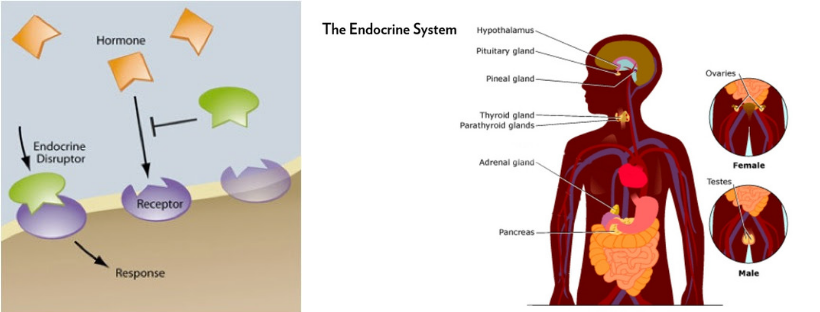 (Beyond Pesticides, July 1, 2019)Â France made a decision in May to ban a widely-used fungicide because it damages the endocrine system. In contrast, there has been a stark failure to protect health in the U.S. Despite a Congressional mandate, EPA is not acting on
(Beyond Pesticides, July 1, 2019)Â France made a decision in May to ban a widely-used fungicide because it damages the endocrine system. In contrast, there has been a stark failure to protect health in the U.S. Despite a Congressional mandate, EPA is not acting on  (Beyond Pesticides, June 28, 2019)Â As is the case in many countries, the conversation about the use of pesticides has been especially vigorous in the past few years. Switzerland is a case in point: it is undergoing deep scrutiny of pesticide use, and the
(Beyond Pesticides, June 28, 2019)Â As is the case in many countries, the conversation about the use of pesticides has been especially vigorous in the past few years. Switzerland is a case in point: it is undergoing deep scrutiny of pesticide use, and the 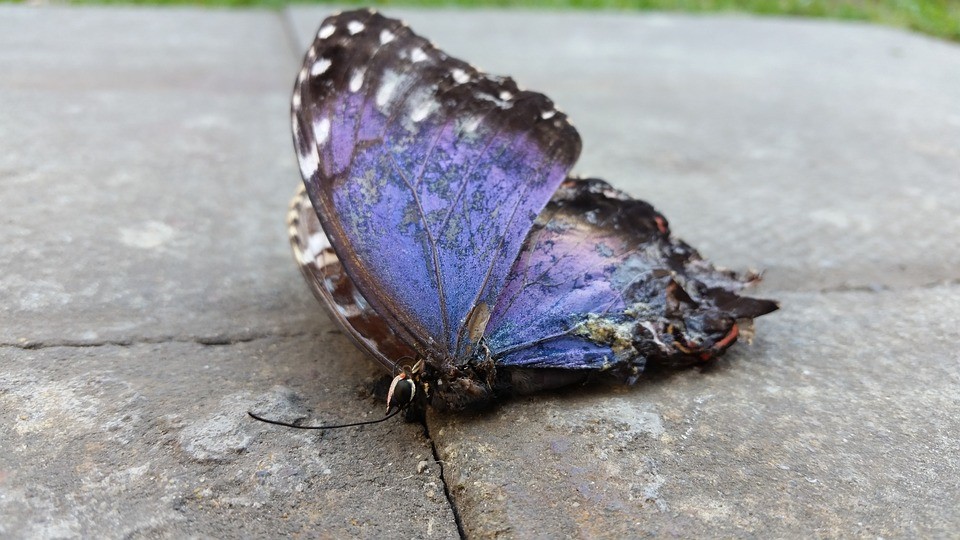 (Beyond Pesticides, June 27, 2019) A review of scientific literature urges for swift societal action on the collapse of insect populations worldwide, according to authors of a study. The authors point out that while there is a need for more research on the extent of the phenomenon as well as causal factors, there is currently sufficient evidence to spur and inform transformational policy in response to a definite worldwide crisis. The paper, Declines in insect abundance and diversity: We know enough to act now, provides a run-down of actions to takeâfrom national policy to apartment balconies.
(Beyond Pesticides, June 27, 2019) A review of scientific literature urges for swift societal action on the collapse of insect populations worldwide, according to authors of a study. The authors point out that while there is a need for more research on the extent of the phenomenon as well as causal factors, there is currently sufficient evidence to spur and inform transformational policy in response to a definite worldwide crisis. The paper, Declines in insect abundance and diversity: We know enough to act now, provides a run-down of actions to takeâfrom national policy to apartment balconies. (Beyond Pesticides, June 26, 2019) Â “We were drooling excessively. My eyes would not stop watering,â
(Beyond Pesticides, June 26, 2019) Â “We were drooling excessively. My eyes would not stop watering,â  (Beyond Pesticides, June 24, 2019) A
(Beyond Pesticides, June 24, 2019) A 
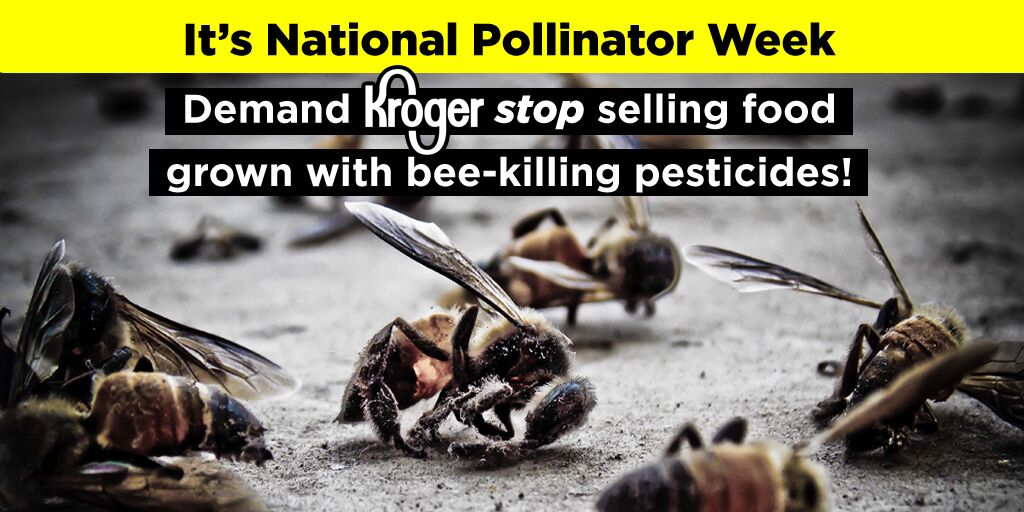 (Beyond Pesticides, June 19, 2019) To mark National Pollinator Week (June 17-23), more than 10,000 people across the country are joining to demand that Kroger (NYSE: KR) help stop the extreme decline of pollinators. Customers are delivering letters to stores asking the nationâs largest conventional grocery store to eliminate pollinator-toxic pesticides from its food supply chain and increase domestic organic food offerings to help stop the catastrophic decline of pollinators and other insects.
(Beyond Pesticides, June 19, 2019) To mark National Pollinator Week (June 17-23), more than 10,000 people across the country are joining to demand that Kroger (NYSE: KR) help stop the extreme decline of pollinators. Customers are delivering letters to stores asking the nationâs largest conventional grocery store to eliminate pollinator-toxic pesticides from its food supply chain and increase domestic organic food offerings to help stop the catastrophic decline of pollinators and other insects.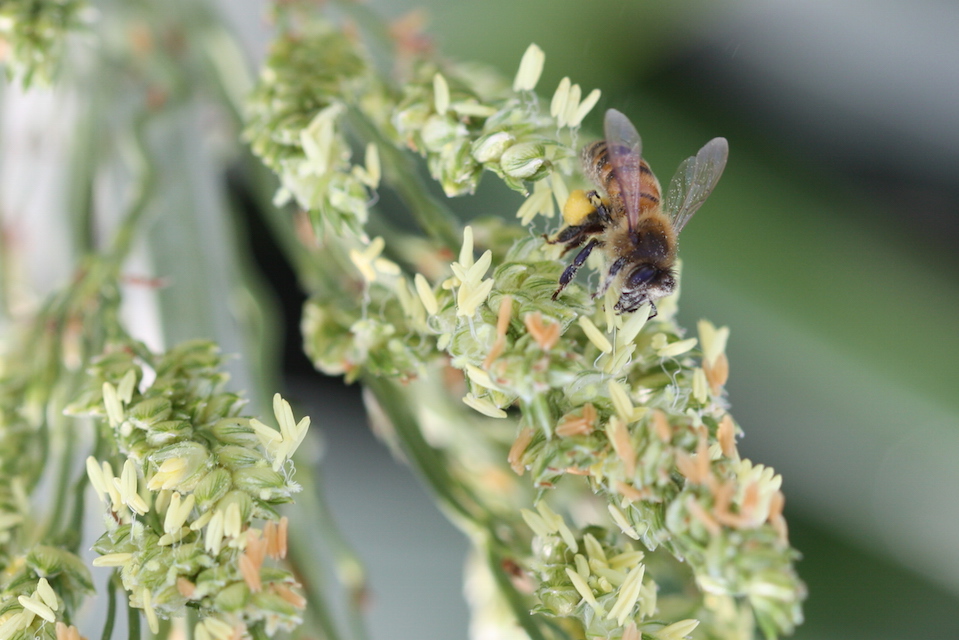 (Beyond Pesticides, June 19, 2019) On June 17, 2019, the Environmental Protection Agency (EPA) once again approved âemergencyâ uses of sulfoxaflor, a bee-toxic insecticide, on millions of acres of crops that are attractive to bees. Sulfoxaflor is functionally identical to the neonicotinoid class of
(Beyond Pesticides, June 19, 2019) On June 17, 2019, the Environmental Protection Agency (EPA) once again approved âemergencyâ uses of sulfoxaflor, a bee-toxic insecticide, on millions of acres of crops that are attractive to bees. Sulfoxaflor is functionally identical to the neonicotinoid class of 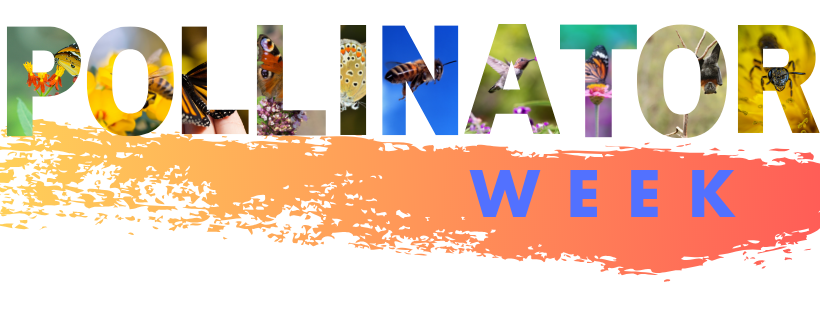 (Beyond Pesticides, June 18, 2019) As the New York Times wrote in November 2018, â
(Beyond Pesticides, June 18, 2019) As the New York Times wrote in November 2018, â (Beyond Pesticides, June 17, 2019)Â During Pollinator Week, starting June 17, ask your elected representative in Congress to support pollinators by co-sponsoring Saving America’s Pollinators Act (SAPA). If they are already a cosponsor, use the occasion to thank them for their leadership on this critical issue.
(Beyond Pesticides, June 17, 2019)Â During Pollinator Week, starting June 17, ask your elected representative in Congress to support pollinators by co-sponsoring Saving America’s Pollinators Act (SAPA). If they are already a cosponsor, use the occasion to thank them for their leadership on this critical issue.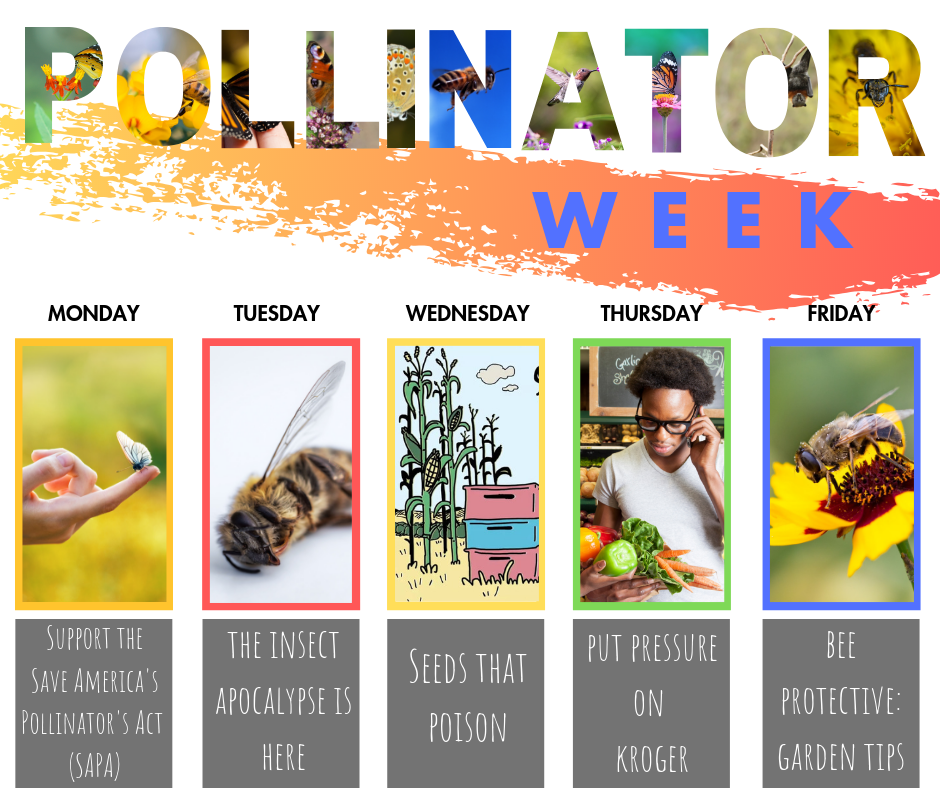
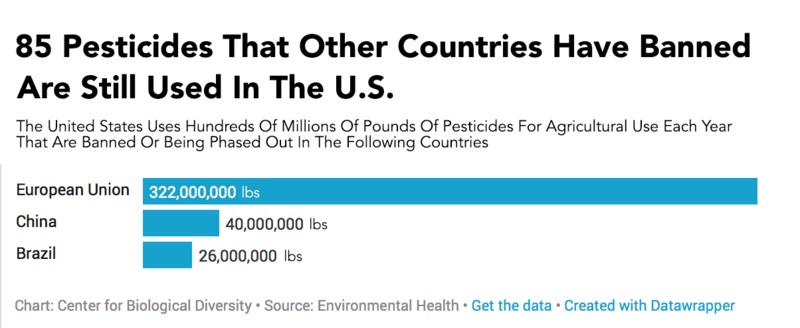 âItâs appalling the U.S. lags so far behind these major agricultural powers in banning harmful pesticides,â said Nathan Donley, PhD, a senior scientist with the Center for Biological Diversity and author of the study. âThe fact that weâre still using hundreds of millions of pounds of poisons other nations have wisely rejected as too risky spotlights our dangerously lax approach to phasing out hazardous pesticides.â
âItâs appalling the U.S. lags so far behind these major agricultural powers in banning harmful pesticides,â said Nathan Donley, PhD, a senior scientist with the Center for Biological Diversity and author of the study. âThe fact that weâre still using hundreds of millions of pounds of poisons other nations have wisely rejected as too risky spotlights our dangerously lax approach to phasing out hazardous pesticides.â
